If your peperomia is turning yellow, it’s likely due to one of these seven causes. Fortunately, there are solutions for each problem so your plant can get back to its healthy green self.
Causes of Peperomia Turning Yellow
The leaves of the plant can become bleached and yellow from too much sun. One of the most common reasons for peperomia turning yellow is too much sun exposure. If you notice your plant is turning yellow, move it to a location with less sun exposure.
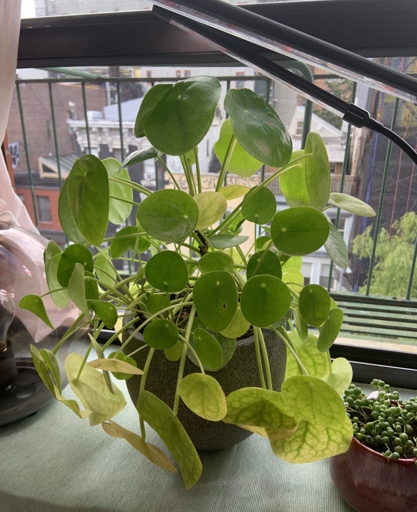
Peperomia are susceptible to root rot if they are kept in soggy soil. Another common reason for yellowing leaves is overwatering. Be sure to allow the soil to dry out completely between waterings. If you think your plant is overwatered, try letting it dry out for a week or so and then water it again.
Yellowing leaves can also be a sign of nutrient deficiency. If your plant is not getting enough nutrients, the leaves will turn yellow. Be sure to fertilize your plant every month during the growing season. Peperomia need a well-balanced fertilizer to stay healthy.
Overwatering
This can cause the leaves to turn yellow and eventually drop off. The soil around the roots of the plant becomes waterlogged, preventing oxygen from reaching the roots. Overwatering is one of the most common reasons that peperomias turn yellow. If you think you are overwatering your peperomia, let the soil dry out completely before watering again. You can also try using a well-draining potting mix to help prevent overwatering.
How To Fix Overwatering Issues
Overwatering is the most common reason for peperomia to turn yellow, and it’s a problem that’s easily fixed. If your peperomia is turning yellow, it’s likely due to overwatering.
Once the soil is dry, water your peperomia only when the soil is dry to the touch. The first step is to allow the soil to dry out completely.
If you continue to water your peperomia even when the soil is dry, the roots will start to rot, and the plant will turn yellow.
To prevent overwatering, water your peperomia only when the soil is dry to the touch. If you’re not sure, it’s better to err on the side of underwatering.
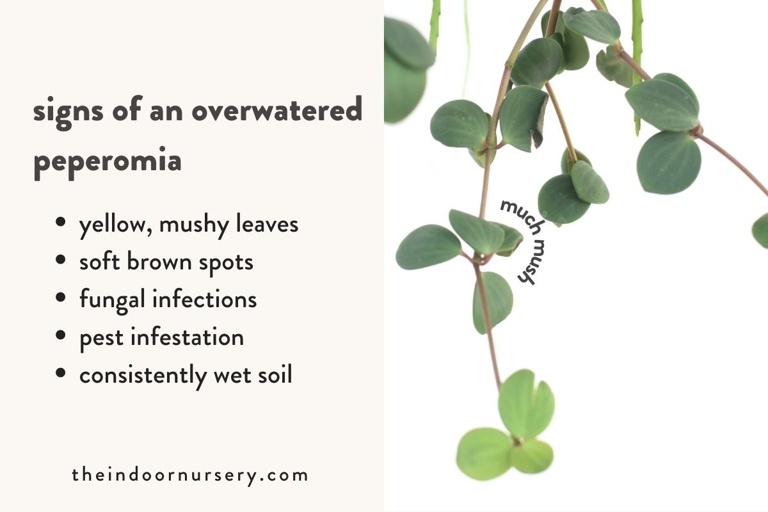
Once you’ve fixed the overwatering issue, your peperomia should start to recover and the yellow leaves will fall off.
Poor drainage
If you think your plant is already suffering from root rot, you can try to save it by replanting it in a pot with fresh, well-draining soil. To prevent this, make sure to plant your peperomia in a pot with well-draining soil and water it only when the top inch of soil is dry. One of the most common reasons for peperomia turning yellow is poor drainage. When the roots of the plant are constantly wet, they can start to rot, which will cause the leaves to turn yellow and eventually die.
Peperomia are native to tropical rainforests, so they prefer bright, indirect light. Another common cause of yellowing leaves is too much direct sunlight. Move it to a spot with less light and make sure to provide it with some protection from the sun if necessary. If your plant is getting too much sun, the leaves will start to turn yellow.
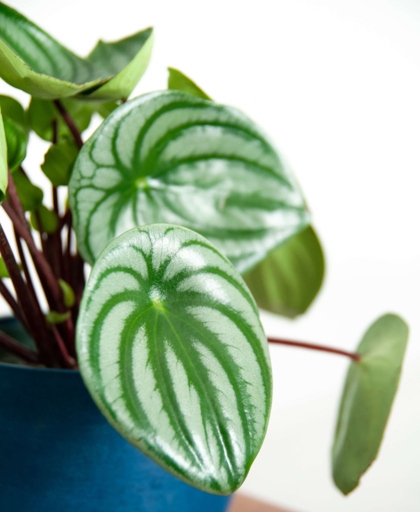
However, if you notice the leaves turning yellow, you can try fertilizing your plant with a balanced liquid fertilizer every month or so. Peperomia are light feeders, so they don’t need a lot of fertilizer. Finally, yellowing leaves can also be a sign of nutrient deficiency.
How To Fix Poor Drainage
There are a few things you can do to fix this problem. One of the most common problems with peperomias is poor drainage. This can cause the plant to yellow and may even lead to root rot.
If your potting mix is too dense, it will hold too much water and cause the roots to rot. First, make sure you are using a well-draining potting mix. You can add some perlite or sand to the mix to help with drainage.
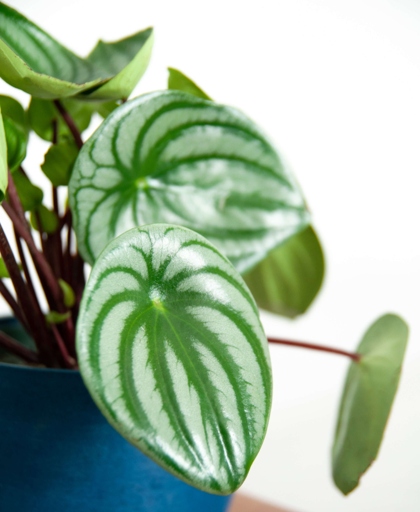
Second, make sure you are not overwatering your plant. If you are unsure, it is better to underwater than to overwater. Water only when the soil is dry to the touch.
If water can’t drain out of the pot, it will sit in the bottom and cause the roots to rot. Third, make sure your pot has drainage holes.
If you follow these tips, you should be able to fix your poor drainage problem and keep your peperomia healthy and happy.
Root Rot
The first sign of root rot is usually yellowing leaves, followed by wilting and eventually death. Root rot is one of the most common problems that peperomia growers face. The problem is caused by a build-up of water in the soil, which leads to the roots of the plant rotting away.

The most important thing is to make sure that your plant is not sitting in water. It’s also a good idea to water your plant from the bottom up, so that the roots don’t stay wet for too long. If you’re growing your peperomia in a pot, make sure that the pot has drainage holes so that excess water can drain away. There are a few things that you can do to prevent root rot from happening in the first place.
If your plant is already showing signs of root rot, the best thing to do is to remove it from the pot and replant it in fresh, dry soil. You may also need to trim away any dead or dying roots. With proper care, your plant should recover and start to grow again.
How to Fix Root Rot
If you notice that your peperomia is turning yellow, it’s important to take action quickly. Root rot is a serious problem that can kill your plant.
Finally, replant the peperomia in fresh, well-draining potting mix. There are a few things you can do to fix root rot. First, you’ll need to remove the affected plant from the pot. Next, trim away any dead or dying roots.
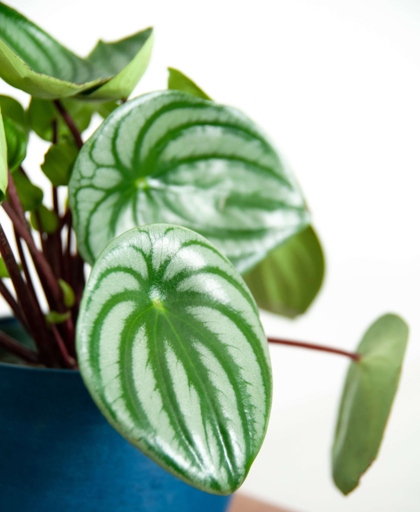
If you catch root rot early, there’s a good chance you can save your plant. But if the problem is left untreated, it will eventually kill your peperomia.
Inconsistent watering
If you’re noticing that your peperomia is turning yellow, it’s likely due to inconsistent watering. If you’re still having trouble, you can try using a moisture meter to help you keep track of the moisture in the soil. However, they do need to be watered consistently, about once a week. Peperomias are succulents, so they don’t need a lot of water to begin with. If you’re inconsistent with your watering, your peperomia will start to turn yellow. The best way to fix this is to water your peperomia consistently, about once a week.
How To Fix Inconsistent Watering
Here are a few tips on how to fix this issue: If your peperomia is turning yellow, it’s likely due to inconsistent watering.
If it is, water your plant thoroughly. First, check the soil to see if it’s dry. 1.
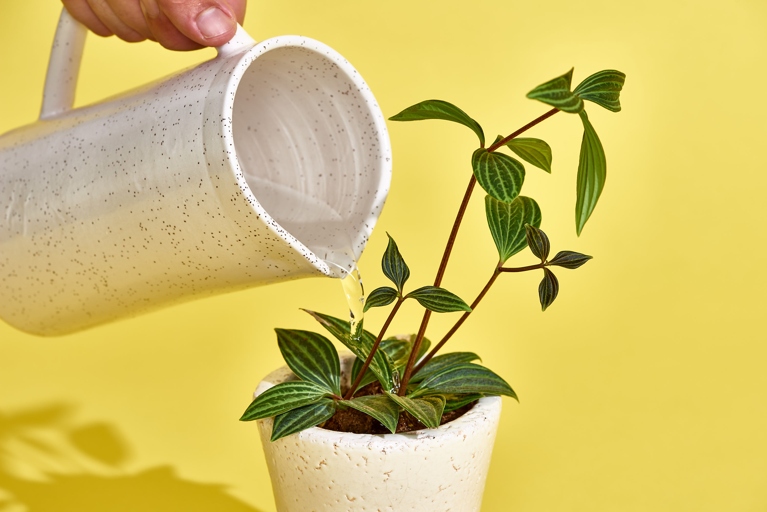
On the other hand, if you’re not watering it enough, water it more often. Next, take a look at your watering schedule. If you’re watering your plant too often, cut back on the frequency. 2.
Finally, make sure you’re using the right type of water. 3. Peperomias prefer filtered or distilled water, so avoid using tap water if possible.
By following these tips, you can get your peperomia back to its healthy self in no time!
Pests
If your peperomia is turning yellow, it’s likely due to one of these seven common causes. Fortunately, most of these problems are easy to fix with a little bit of know-how.
If you see yellow leaves and the soil is very dry, give your plant a good drink. Peperomias are native to tropical regions and do not like to be soggy. Allow the top inch of soil to dry out before watering again. One of the most common reasons for yellowing leaves is overwatering.
Peperomias prefer bright, indirect light. If your plant is in a sunny spot, move it to a shadier location. Yellow leaves can also be a sign of too much sun.
If you think this might be the case, fertilize your plant with a balanced fertilizer. Yellow leaves can also indicate a nutrient deficiency.
Look for signs of aphids, mealybugs, or spider mites. These pests can be controlled with insecticidal soap or neem oil. Pests can also cause yellowing leaves.
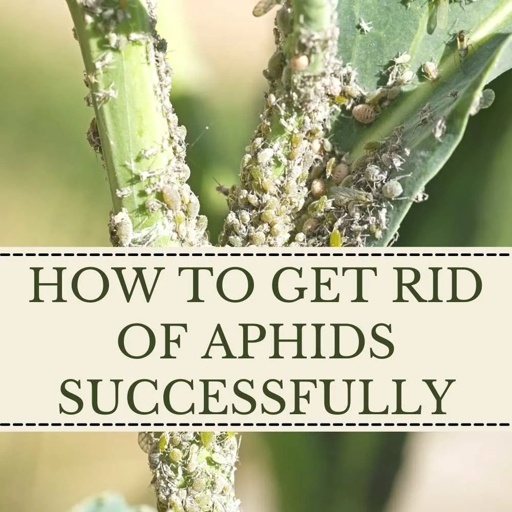
If you suspect your plant is suffering from a disease, it’s best to consult with a professional. Many diseases can be treated with fungicides or pesticides.
Most peperomias are tough, resilient plants. With a little bit of care, they will thrive for years.
How To Fix Insect Issues
With a little troubleshooting, you should be able to get your peperomia back to its healthy self in no time. Be sure to follow the instructions carefully, and always test a small area of the plant first to make sure it won’t cause any damage. If you’re noticing that your peperomia is turning yellow, there are a few potential causes and solutions. To fix this, let the soil dry out completely before watering again. Another possibility is that the plant is getting too much sun, so try moving it to a shadier spot. If you suspect your plant has a pest problem, you can try treating it with an insecticide. If the leaves are yellow and mushy, it could be a sign of root rot, which is caused by too much moisture. One common reason for yellowing leaves is a lack of nutrients, so be sure to fertilize your plant regularly.
Sunlight Levels
Fortunately, all of them are relatively easy to solve. If your peperomia is turning yellow, it’s likely due to one of these seven causes.
1. Too Much Sunlight
If you live in a sunny climate, make sure to place your peperomia in a spot that doesn’t get direct sunlight, as this can scorch the leaves and turn them yellow. Peperomias are native to tropical and subtropical regions, so they’re used to bright, indirect sunlight.
Not Enough Sunlight 2.
Try moving it to a brighter location, such as near a east- or west-facing window. Peperomias also need a good amount of light to thrive, so if your plant is in a low-light spot, it may start to turn yellow.

Water Stress 3.
On the other hand, if the leaves are yellow and mushy, it’s a sign that you’re overwatering. Yellowing leaves can also be a sign of water stress, which means your plant is either getting too much or too little water. If your peperomia’s leaves are wilting or drooping, it’s a good indication that it needs more water.
Nutrient Deficiencies 4.
However, if your plant is not getting enough nutrients, it can start to turn yellow. Peperomias are light feeders, so they don’t need a lot of fertilizer. Look for a fertilizer that’s specially formulated for tropical plants, and use it according to the package directions.
5. Pest Infestation
You may also want to treat your plant with an insecticidal soap or neem oil to prevent further infestations. Yellowing leaves can also be a sign of a pest infestation, such as aphids, mealybugs, or spider mites. If you see any pests on your plant, be sure to remove them immediately.
6. Temperature Stress
Peperomias are tropical plants, so they prefer warm, humid conditions. If your plant is exposed to drafts or cold temperatures, it may start to turn yellow. Make sure to keep your peperomia in a spot that’s away from doors and windows, and maintain a consistent temperature around the plant.
Disease 7.
If you suspect your plant is diseased, be sure to take it to a local nursery or garden center for diagnosis and treatment. Yellowing leaves can also be a sign of disease, such as root rot or leaf spot.
How To Fix Issues With Sunlight Levels
If your peperomia is turning yellow, it’s likely due to one of these 7 causes. Luckily, all of them are easily fixable!
Too much sun. Peperomias are native to tropical rainforests, so they prefer filtered light. Move it to a spot that gets indirect light and it should start to green up again. 1. If your plant is getting too much sun, it will start to turn yellow.
Move it to a spot that gets bright, indirect light and it should start to perked up. On the other hand, if your peperomia isn’t getting enough sun, it will also turn yellow. Not enough sun. 2.
Peperomias are drought tolerant, but they still need to be watered regularly. Water it thoroughly and it should start to look better. If your plant is wilting or its leaves are drooping, it’s probably thirsty. 3. Water stress.
Nutrient deficiency. 4. If your plant is lacking in nutrients, it will start to turn yellow. Feed it with a balanced fertilizer and it should start to green up again.
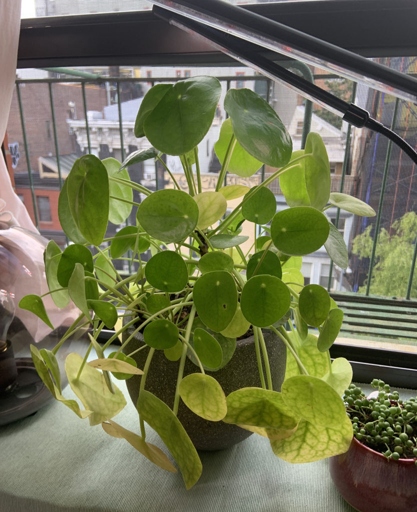
Treat it with an insecticide and the problem should be solved. If your plant is infested with pests, it will start to turn yellow. 5. Pest infestation.
Treat it with a fungicide or bactericide and it should start to recover. 6. Disease. If your plant is infected with a disease, it will start to turn yellow.
If you’ve been fertilizing your plant too much, it will start to turn yellow. Cut back on the fertilizer and it should start to look better. 7. Too much fertilizer.
Nutrient Deficiency
One common reason that peperomias turn yellow is due to a nutrient deficiency. If your peperomia is turning yellow, it’s important to check the plant for signs of nutrient deficiency and take steps to correct the problem. This can be caused by a number of factors, including incorrect watering, poor soil, or a lack of nutrients in the soil.

You can also amend the soil with compost or other organic matter to help improve its nutrient content. If you suspect that your plant is lacking in nutrients, you can try fertilizing it with a balanced fertilizer. Common symptoms of nutrient deficiency in peperomias include yellowing leaves, stunted growth, and poor overall plant health.
If your peperomia is turning yellow due to a nutrient deficiency, taking steps to correct the problem should help the plant recover. With proper care, your peperomia should soon be back to its healthy self.
How To Fix Nutrient Deficiency
The most common nutrient deficiencies in peperomias are nitrogen, phosphorus, and potassium. If your peperomia is turning yellow, it’s likely due to a nutrient deficiency.
To fix a phosphorus deficiency, fertilize your plant with a high-phosphorus fertilizer. To fix a potassium deficiency, fertilize your plant with a high-potassium fertilizer. To fix a nitrogen deficiency, fertilize your plant with a high-nitrogen fertilizer.
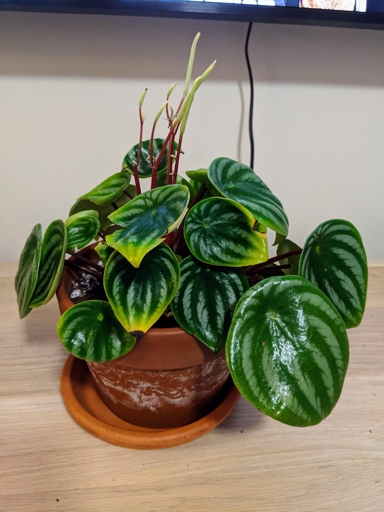
If you’re not sure which nutrient your plant is deficient in, you can get a soil test kit from your local nursery or garden center.
Frequently Asked Questions
1. Why is my peperomia turning yellow?
There are a few reasons why your peperomia may be turning yellow. It could be due to too much sun, not enough water, or a nutrient deficiency.
2. What are the signs that my peperomia is getting too much sun?
If your peperomia is getting too much sun, the leaves will start to turn yellow and may even get sunburned. The leaves will also start to curl up and dry out.
3. What are the signs that my peperomia is not getting enough water?
If your peperomia is not getting enough water, the leaves will start to turn yellow and wilt. The soil will also feel dry to the touch.
4. What are the signs that my peperomia has a nutrient deficiency?
If your peperomia has a nutrient deficiency, the leaves will start to turn yellow and may even fall off. The plant may also start to look stunted.
5. How can I prevent my peperomia from turning yellow?
To prevent your peperomia from turning yellow, make sure to give it the right amount of sun and water. You should also fertilize your plant regularly to make sure it’s getting all the nutrients it needs.
6. How can I fix my peperomia if it’s already turning yellow?
If your peperomia is already turning yellow, you can try to fix it by giving it more or less sun, water, or nutrients. You can also try moving it to a different location.
7. What should I do if my peperomia doesn’t improve?
If your peperomia doesn’t improve, you may need to consult a professional. They can help you diagnose the problem and find a solution.
Final thoughts
If your peperomia is turning yellow, it could be due to a number of reasons. The most common causes are too much sun, too much water, or a nutrient deficiency. Luckily, all of these problems can be easily fixed with a little bit of effort. Just be sure to pay attention to your plant and give it the care it needs, and it will be sure to thrive.
